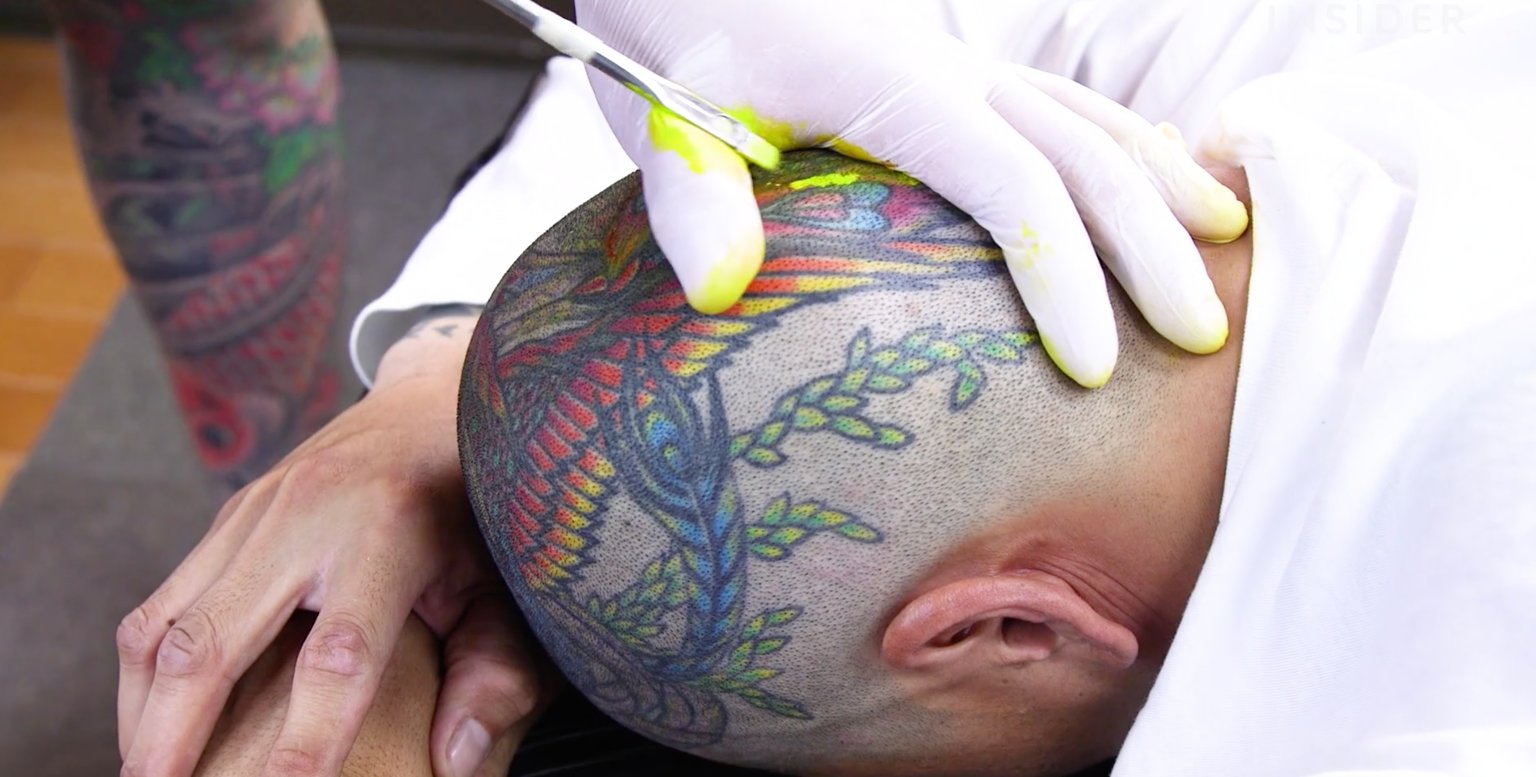A young female tourist, known to the writer’s family, arrived in Sri Lanka, just before the Easter Sunday attacks on Churches and Tourist Hotels, a year ago, with tattoos all over her body. She had a glorious holiday for two weeks, particularly confining her holiday to Mirissa and Unawatuna beaches. She was extremely friendly, educated and cultured. She decided to confine herself to the ‘golden beaches’ down south to enjoy the sunshine. Where she was in a bikini most of the time, which meant that her white flesh was ninety-nine per cent exposed. She wore a pair of tiny shorts only when she went into the food and drink outlet, and God bless her, she gobbled Gal Arrack ‘neat’. Her behaviour drew the attention of all the onlookers because she exposed quite a few of her tattoos on her body from neck, hands, cleavage, abdomen area above belly button, back and just above the buttocks. Both her thigs, and calf muscles carried prominent pictures of various coloured tattoos, which covered literally her entire body.
Tattoo
The tattoo is generally a design created by inserting ink, dyes and pigments with intricate needles. Symbols are indelible once a tattoo artist drives pigments into the dermis, containing blood capillaries, nerve endings, sweat glands, hair follicles etc. There are some kinds of tattoos, which are erasable fully or partially with laser treatment. Typically, black and some coloured inks can be removed more easily than inks of other pigmentation. The expense and pain associated with removing a tattoo is said to be higher than the cost and pain associated with applying it! Many tattoo artists prefer to use black ink, made up of carbon, in preference to coloured stains. Some tattoo artists use vegan ink to lessen animal-based toxins. However, traditional tattoo ink comes from pen ink, soot, blood etc. In the modern method of tattooing, an electrical device adds ink into the skin through a single or a group of needles soldered into a bar attached to an oscillating unit. The machine repetitively drives needles in and out of the skin at the rate of 80-150 times per second.
International Rules
Several countries have introduced strict regulations on tattooing as a direct result of its associated health risks. These regulations become applicable to both, the customer and the tattoo artist, due to the possibility of local infection and virus transmission during the process. Rules on tattooing state that the artist should wear plastic aprons to protect his eyes as blood or other secretions may splatter into eyes and clothing of the tattooist. Regulations also state that the artist should always wash his/her hands, and keep the working area immaculately clean; wearing of gloves during the operation is a must at all times. The wound, after a tattooing session, must be sponged frequently with a wet disposable towel. It is vitally important, during the tattooing operation, to have all equipment sanitized in a certified autoclave before and after use. Tattooing has been regimented due to the fact that during the process, it can break the skin barrier and could cause health risks causing infection and allergic reactions. Depending on the size and the areas of the tattoo, it can bring about excruciating pain, and may cause the person even to faint. Unsterilised tattoo equipment or contaminated ink can bring about infections of the skin, hepatitis, herpes simplex virus, HIV, tetanus and tuberculosis.
When a volunteer approaches a tattoo artist, the tattoo artist uses a solvent for the pigment to travel from the point of the needle to surrounding dermis. Artists use alcohol as part of the ‘ carrier’ base pigment to disinfect the skin before application of the tattoo to increase the skin’s permeability, thus helping to transport more dyes to the surface. During the process, ink flows down the needle into the dermis creating a wound where the body automatically tries to heal by sending macrophages (a type of white blood cells) to the area to swallow the ink to take the foreign particle away from the wound. If the pigment in ink becomes too large for macrophages to remove, then it ends up by sticking to the dermis where the problems can begin.
The majority of the people who get tattoos done may not consider the severity of medical complications out of pigment reaction with the body. Precise medical scans have indicated the appearance of specific tumours, for example, a woman who underwent a complete hysterectomy was later reported having tattoo pigment in her lymph nodes!
A Fashion
In today’s modern society the reasons, to get a tattoo done on one’s body, are wide and varied from artistic, cosmetic, sentimental to religious. The impact of symbols varies according to each culture. Tattoos may show a person’s feeling about one’s parents or children. Today, people choose artistic, cosmetic and sentimental reasons as an identification with a particular group that includes criminal gangs or a specific ethnic group or law-abiding subculture. Tattoos have now become a trend in society, purely either as a decoration or for a symbolic and specific meaning. With regard to animals, particularly on livestock for identification purposes, the usual methods used are very crude and inhuman. The manner in which Hitler’s Nazi army, forcibly did tattooing in concentration camp inmates, for identification purpose during the holocaust was known as ‘Hitler’s Nazi identification system.’
Meaningful Tattoos

In the olden days, for example, a tattoo was found on a man’s forearm, chest or at the back carrying a significant meaning. Those rebellious types were keen to display a dagger or a tiger tattooed in a visible place of one’s body. However, even the modern fashionable woman has turned tattoos into a fashion and uses it as a showpiece. This can be seen in every part of her body. Some women wish to display their desirability or suggestive sexual allure by getting tattoos done on the nipples and on ‘reconstructed’ breasts, on their buttocks and many other ‘invisible places’.
Egyptian Mummies
Preserved tattoos on ancient Egyptian mummies reveal that tattooing was practised throughout the world for many centuries. Women in Papua New Guinea were tattooed at the age of five as a traditional omen with a ‘V-shaped tattoo’ on their chest, and annual additions to the tattoo indicated that the particular woman had reached the marriageable age!
Egyptians used tattoos initially to show dedication to God as protection. ‘Jehovah’s Witnesses’ prohibit any tattoo markings on their body. Judaism focuses on the book of the Torah. It clearly states: “ One shall not make gashes in their flesh.” In other religions like Hinduism and Neopagan, tattoos were accepted. Christianity remains one of the rituals without a definitive answer on symbols. Many Coptic Christians in Egypt have a ‘cross’ tattooed on their right wrist to differentiate them from the Muslims. In Sunni Islam, tattoos are considered to be haram based on passages in the Hadith. Shia Islam does not entirely prohibit tattooing, but anyone with a tattoo maybe looked down up upon.
BUDDHA PUB
Southeast Asia has a tradition of protective tattoos known as yantra tattoos that include Buddhist images, prayers, and symbols. Pictures of the Buddha in tattoo form have caused controversy in Sri Lanka. A tourist, who had a Buddha’s tattoo on her forearm (as an inspiration to Buddhism) and she being a follower of the philosophy but who was not aware of Sri Lanka’s traditions and customs, was arrested. Finally, she had to spend some time in police custody before she was produced in Courts!
Contrary to such incidents in Sri Lanka, gardens in other countries a display of Buddha’s head is used as a garden decoration. In addition, various public houses ( pubs) where people consume alcohol are boldly named “ Buddha Pub’! According to the Fifth Precept of Lord Buddha: “Do not take intoxicants’ (Surameraya Maggapama Dastana Weramuni Sikkapadam Samadhiyami), it does not cast consuming alcohol as a sin, but it stems more from the problems caused by a clouded mind being intoxicated as the person who is drunk is more prone to do something unwise.
A temporary tattoo is a non-permanent image on the skin resembling a permanent tattoo. Temporary tattoos can be drawn, painted, airbrushed or needled as a permanent tattoo with a spot of ink, which can be dissolved in blood within six months of the art as a form of body painting
It is, therefore, pertinent to think twice before one makes up his mind to get a tattoo done. It becomes imperative to do some research to find out whether the artist is reputable, his equipment is hygienic because ending of those needle bits that jet ink particles tend to access the lymph nodes, and finally may end up with cancer-like symptoms after fifteen years! The only way suggested to get a tattoo removed would be by getting an MRI to scratch it.
Picture credit: Google photos – Mrs Maud-Stevens Wagner 1907.






